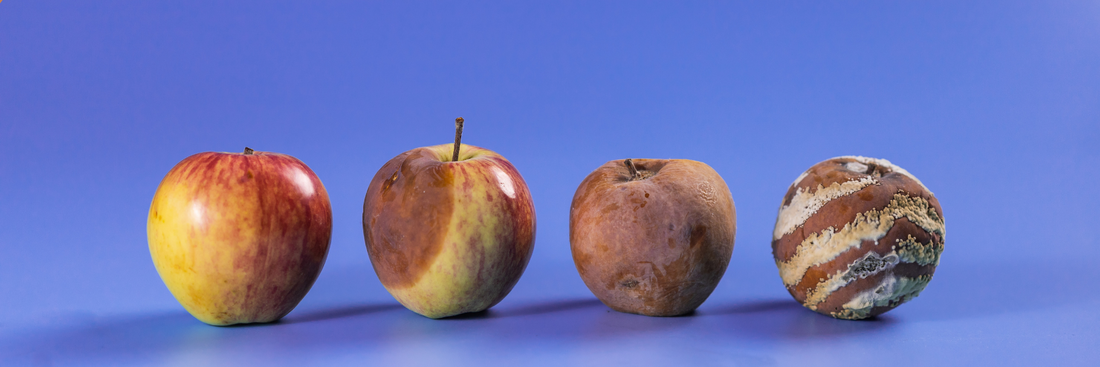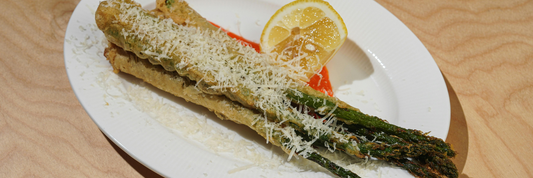When ordering food to-go, we expect it to be fresh, delicious, and safe to eat. But the journey from restaurant to your doorstep can put your meal at serious risk. From soggy salads to spoiled poke bowls, food spoilage in takeout is more common than you think and it’s a growing concern for consumers and F&B operators alike.
In this article, we’ll explore the causes of takeout spoilage, the role of packaging in keeping food fresh, and how to choose sustainable solutions that protect both your food and the environment.
Why Takeout Food Spoils Easily

Takeout meals face several challenges that can affect food safety and freshness:
- Temperature fluctuation: Once removed from hot trays or chillers, food rapidly enters the “danger zone” (between 4°C – 60°C), where bacteria multiply fast.
- Moisture build-up: Steam trapped inside containers causes sogginess, especially in crispy foods like fries or tempura.
- Cross-contamination: Leaky sauces or poorly sealed containers can transfer bacteria between items.
- Extended delivery times: Delays from traffic or high order volume increase spoilage risk.
Meals with raw ingredients (like sushi or poke), dairy-based dressings, or fresh greens are particularly vulnerable.
Food Safety in Delivery Services – What Can Go Wrong?

According to food safety experts, improper delivery handling is one of the top reasons for foodborne illness in takeout. Here’s why:
- Many delivery platforms lack strict temperature control protocols.
- Food may be stored in hot car trunks or stacked without insulation.
- Some packaging isn't designed to handle transport movement or pressure.
Even visually intact meals can become unsafe. For example, a poke bowl kept above 10°C for over 2 hours may appear fine but carry harmful bacterial growth.
Packaging to Keep Food Fresh
Packaging isn’t just about presentation it’s a critical tool for preventing food spoilage. The right container can regulate airflow, separate wet and dry components, and even absorb excess moisture.
Here are proven packaging solutions that help keep takeout food fresh:
- Leakproof, airtight containers: Prevent exposure to oxygen and reduce cross-contamination.
- Vacuum sealing & MAP (Modified Atmosphere Packaging): Remove air or inject nitrogen/CO2 to slow bacterial growth.
- Moisture-control layers: Use greaseproof liners or pads for oily/saucy dishes.
- Compartmentalized trays: Keep sauces, dressings, and crunchy toppings separate until serving.
This is especially critical for salads and poke bowls, where sogginess ruins texture and freshness.
Temperature Control for Fresh Food Delivery

Temperature control is the backbone of food safety in delivery services. Without proper thermal regulation, even the best-packaged meals can spoil quickly.
Common methods to maintain temperature:
- Thermal delivery bags: Reflect heat and keep food warm or cold for 30–60 minutes.
- Insulated containers: Great for soups and hot dishes.
- Cooling gel packs: Essential for raw fish, dairy, or salad deliveries.
- Cold chain monitoring: Some advanced systems track delivery temperature in real time.
Fast-casual restaurants and delivery-focused startups are now adopting IoT-enabled packaging that changes color when a safe temperature is breached building customer trust and reducing liability.
Best Packaging for Food Delivery
No single packaging fits all. Each dish requires packaging tailored to its moisture, temperature, and texture profile.
Salad Freshness for Delivery
- Vented lids prevent condensation.
- Separate compartments for dressings and crunchy toppings.
- Compostable trays made from sugarcane or bamboo are ideal.
Poke Bowl Packaging Solutions
- Leakproof, deep containers with snap-fit lids.
- PLA or CPLA compostable plastic with cold-resistant properties.
- Optional inner seals to keep toppings separate from sauces.
Hot Foods (e.g., rice, grilled meats)
- Dual-layer packaging prevents burns and sogginess.
- Heat-retaining foil-lined boxes.
Using the best packaging for food delivery isn’t just about quality it directly affects how fresh, safe, and appealing your food is upon arrival.
Sustainable Takeaway Packaging Solutions

As consumers become more eco-conscious, eco-friendly packaging for takeaway is no longer optional it’s expected.
Top solutions include:
- Kraft paper containers with cornstarch lining – recyclable and grease-resistant.
- Bagasse (sugarcane pulp) trays – compostable, strong, and heat-resistant.
- PLA/CPLA bioplastics – plant-based and suitable for cold or hot foods.
- Pressed palm leaves or bamboo – stylish and naturally biodegradable.
Compostable containers for poke and salad are gaining popularity in health-focused food brands. They offer sustainability without compromising food safety.
A sustainable takeaway packaging solution also reduces dependency on single-use plastics, aligns with ESG goals, and enhances your brand’s image.
Prevent Food Waste in Restaurants
Did you know that 26–38% of food waste in food delivery comes from spoilage or customer dissatisfaction?
Investing in the right packaging helps restaurants:
- Keep food fresh longer.
- Minimize returns and complaints.
- Reduce over-packaging while still protecting meals.
For restaurants, preventing food waste isn’t just good for the environment it saves money and strengthens your brand’s trustworthiness.
Conclusion
Takeout food doesn’t have to be a gamble. With the right packaging and temperature controls, meals can arrive safe, fresh, and exactly as the chef intended. And when that packaging is eco-friendly and compostable, it also reduces environmental impact.
Whether you’re a restaurant owner, a food startup, or a delivery app, your packaging choices directly influence food safety, customer experience, and sustainability.




